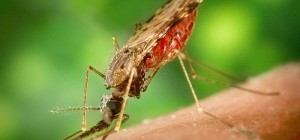
In January, John visited Grambling State University, Philander-Smith College, and the University of Arkansas Little Rock to lecture on White-nose Syndrome, meet with students and…

Rift Valley fever is a viral disease of animals and humans and a global public health concern due to its ecological plasticity, ability to adapt,…

Emerging pathogens are among the most visible and costly threats to individual and public health. Antibiotics, vaccines, and the molecular revolution in biology have not…

This year is the 20th anniversary of the Programme on Epidemic Models held at the Isaac Newton Institute for Mathematical Sciences in Cambridge, UK. In…

Drew Kramer, John Drake and colleagues at Old Dominion University have published a new model for the accumulation of bacterial species on organic aggregates. The…

Whooping cough, caused by the infectious bacterium Bordetella pertussis, is a disease historically associated with childhood. During the third quarter of the twentieth century whooping…

The influenza virus is one of the primary causes of acute respiratory infections in humans. Influenza is interesting from an ecological perspective, however, because it…

Vector-borne diseases in urban environments are a major public health issue in the developing world. The outbreak of West Nile virus (WNV) in New York…

Marine aggregates constitute a significant portion of the suspended material in seawater and are highly enriched in bacteria. These include pathogenic bacteria, and aggregates have…

Wildlife and plant diseases can reduce biodiversity, disrupt ecosystem services and threaten human health. Emerging pathogens have displayed a variety of spatial spread patterns due…





